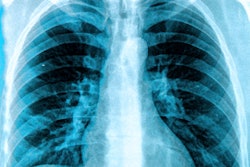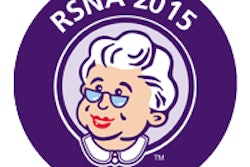
The Choosing Wisely initiative seems to have successfully reduced unnecessary utilization of two imaging exams in the U.S. that appeared on a list of overused medical tests, according to a study published October 12 in JAMA Internal Medicine. But two other questionable imaging tests saw no decline.
The study is the first nationwide look at the effectiveness of Choosing Wisely, the researchers believe. The group found that use of cardiac stress imaging for low-risk patients without symptoms declined a full percentage point over a two- to three-year span, while imaging for uncomplicated headache declined a point and a half.
But Choosing Wisely was apparently less successful in reducing inappropriate use of two other imaging tests: preoperative chest x-rays in patients with unremarkable clinical histories and physical exams, and imaging for low back pain in individuals without "red flag" conditions. In addition, two nonimaging studies on the Choosing Wisely list actually saw increases in utilization.
Choosing Wisely was launched in 2009 by the American Board of Internal Medicine Foundation with the goal of making physicians aware of commonly overused medical procedures. The campaign relies on different medical specialty societies that issue lists of tests that are frequently used but provide minimal benefit to patients in most situations.
To analyze the effectiveness of the campaign, a team led by Dr. Alan Rosenberg from health insurance provider Anthem analyzed medical and pharmacy claims from Anthem-affiliated Blue Cross and Blue Shield plans for about 25 million individuals around the U.S. The researchers picked seven Choosing Wisely tests to investigate, each of which had different target patient populations. Four of the tests involved the use of medical imaging (JAMA Intern Med, October 12, 2015).
The researchers started their data collection periods in either 2010 or 2011, depending on when the Choosing Wisely recommendations were issued for a particular test, and gathered data for each test for at least 10 calendar quarters, up to the third quarter of 2013. They then analyzed usage patterns before and after Choosing Wisely recommendations were issued for the seven tests.
There were statistically significant declines in use of two of the imaging tests, they found. Two of the nonimaging procedures saw utilization growth, while there was no statistically significant change for the remaining two imaging tests and one nonimaging procedure.
| Impact of Choosing Wisely on procedure utilization | ||||
| Procedure | Use rate before Choosing Wisely | Use rate after Choosing Wisely | Relative % change | p-value |
| Imaging for headache with uncomplicated conditions | 14.9% | 13.4% | -10.1% | < 0.001 |
| Cardiac imaging in the absence of cardiac disease | 10.8% | 9.7% | -10.2% | < 0.001 |
| Human papillomavirus (HPV) testing for women under 30 | 4.8% | 6.0% | 25% | < 0.001 |
| Prescription nonsteroidal anti-inflammatory drugs (NSAIDs) for those with chronic conditions | 14.4% | 16.2% | 12.5% | < 0.001 |
| Use of antibiotics for sinusitis | 84.5% | 83.7% | -0.9% | = 0.16 |
| Chest x-ray before surgery | 91.3% | 91.5% | 0.2% | = 0.70 |
| Imaging for low back pain | 53.7% | 53.7% | 0.0% | = 0.71 |
The researchers characterized their findings as "mixed," given that two tests showed increases in utilization and three others did not show any statistically significant changes. It's possible that Choosing Wisely's format of simply publicizing recommendations isn't powerful enough to effect real change in physician ordering behavior.
"Our mixed results highlight the need for interventions beyond the current level of promotion, such as data feedback, physician communication training, systems interventions (e.g., clinical decision support in electronic medical records), clinician scorecards, patient-focused strategies, and financial incentives," Rosenberg and colleagues wrote.
In a commentary on the study, Drs. Ralph Gonzalez and Adithya Cattamanchi of the University of California, San Francisco (UCSF) wrote that the results indicate that Choosing Wisely's recommendations are only a "starting point" toward reducing wasteful medical practices. Delivery systems and clinician groups must rise to the Choosing Wisely challenge, and "develop and implement strategies that make it easier for clinicians to follow Choosing Wisely recommendations."



















